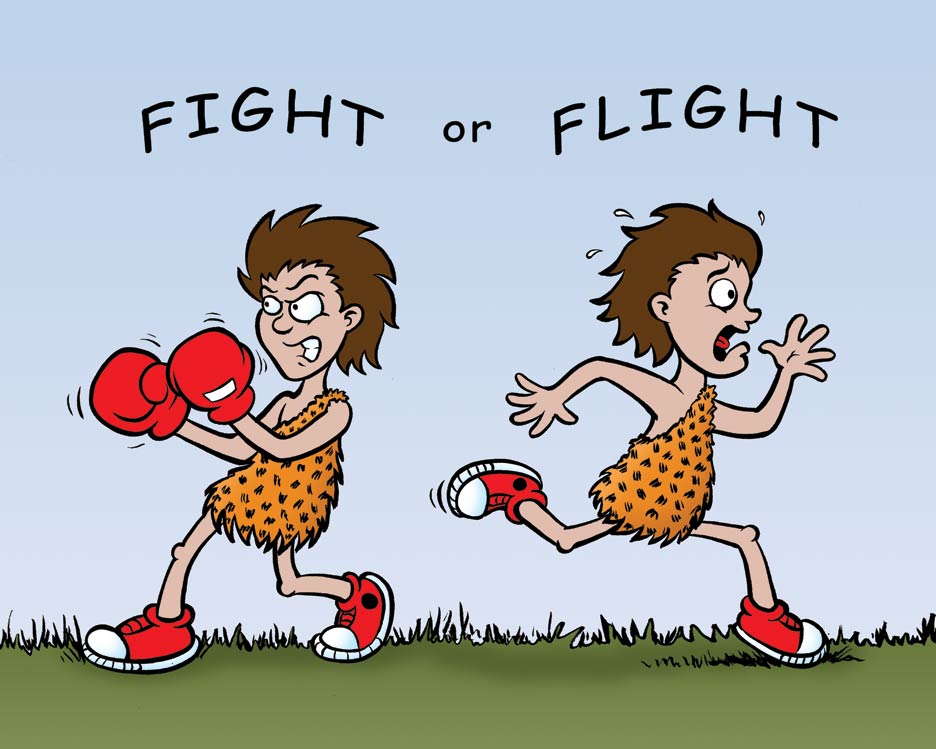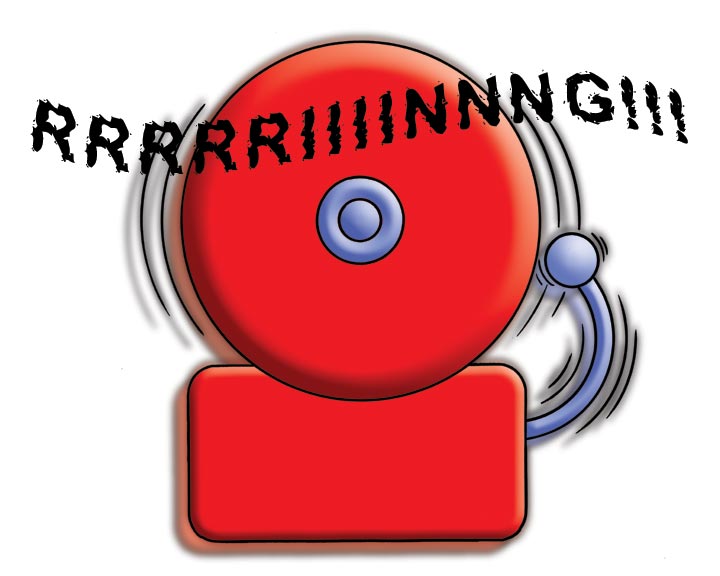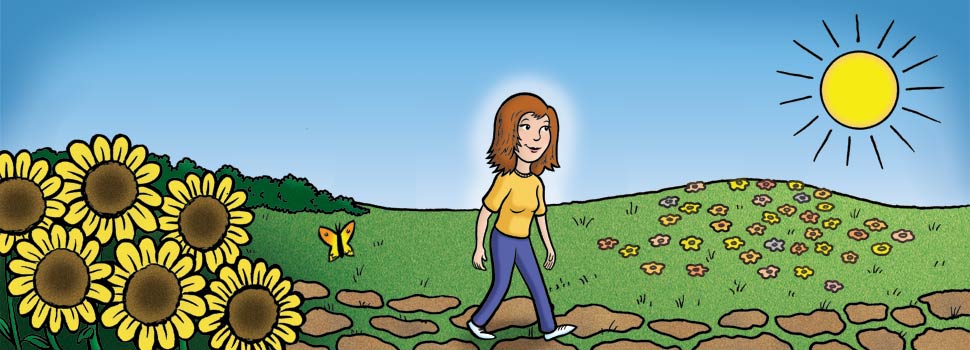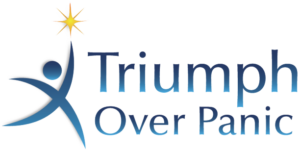How I Achieved My Cure
by Neal Sideman
After my first two panic attacks, I awakened each morning to an instantly racing heart, hyperventilation, and cresting waves of fear and apprehension. My range of activity for each day was dictated by my agoraphobia, and my range gradually got narrower and narrower.
Every aspect of my life was deeply affected. Once, a friend asked me to explain what things I couldn’t do. I answered that it would take much less time if I simply listed those things I could do.
At my low point, I was buffeted from morning to night by waves of anxiety and panic, and I was barely able to venture one block from my apartment.
To summarize a story that could fill many pages, I spent years doing everything I could to heal from this condition. After many disappointments, my tenacity finally paid off. I found my answer.
The answer I found was the deeply transformational process of learning mastery over my panic and anxiety.
For me, there were two keys to learning this mastery and curing this condition: education and practice
Education
Learn in depth about panic and panic disorder/ agoraphobia, and you have taken a huge step towards achieving your cure.
We grow up in a culture that teaches us next to nothing about what the panic response really is. No wonder we feel overwhelmed when we experience it firsthand!
Panic – also known as “fight or flight” – is a physiological response for which everybody is “wired” – it has been essential to our survival as a species. Through millions of years of evolution, our bodies were built to easily tolerate the panic response – it is completely harmless to the body and the mind.


Similarly, the purpose of the panic response is to insure our protection and survival in the event of a real emergency, when a split-second response could mean the difference between life and death. But the panic response itself is never dangerous.
Fear of panic is at the root of panic disorder. As one really begins to learn that no part of the panic response is ever harmful or dangerous, the fear of panic begins to subside. One is held less and less “in the thrall” of the panic experience.
One of the authors who inspired me was Dr. Fredric Neuman, who overcame panic disorder himself. In his book Fighting Fear (1985), he explains:
“If human beings were immobilized or fell apart physically in the face of overwhelming fear, the race would have died out long ago. Can you imagine a caveman responding to a saber-toothed tiger by falling to the ground with a heart attack or running around out of control? ….you must discover the truth for yourself. When you see finally that the panic attack is not inherently dangerous, you will have achieved the principal goal of treatment.”
Many other books include excellent explanations of the nature of panic and panic disorder. Among them are:
Panic Attacks Workbook (new edition: 2022) by David Carbonell
Mastery of Your Anxiety and Panic: Workbook (new edition: 2022) by David Barlow and Michelle Craske (see especially chapters 1, 3 and 4)
For everyone reading this Open Letter, I have created a free series of short audios and cartoons to introduce the basics to you in a short time. Tap or click here to start:
I hope you enjoy the cartoons!
Practice
Any important skill we learn in life we learn through practice. The best method of practicing is taking things step-by-step, appreciating our success at each step. Learning to appreciate our successes is itself a practice and is key to learning anything new.
My favorite example is learning to walk. Parents instinctively know how to encourage their babies to learn to walk. No matter how slowly their child learns, no matter how many “missteps,” the parent instinctively knows that every step is a success. The parent knows that the pratfalls are a vital part of the learning process – and so they are successes too.
There were two “practices” through which I learned, step-by-step, to master my anxiety and panic: cognitive-behavioral therapy and meditation.
Practice #1: Cognitive-Behavioral Therapy (“CBT”)
Cognitive-Behavioral Therapy (“CBT”) is an approach that is effective for many conditions. The tools get very specific, depending on the condition. For panic disorder and agoraphobia, the tools are highly effective.
Here is a simple way to understand CBT: it is the “mind-body” approach to “mind-body” conditions. “Cognitive” is the mind, and “behavioral” is the body. Panic disorder is in the mind, but it is also very much in the body!
These audios and cartoons will give you a great introduction to CBT for panic disorder:
When I was working on my recovery, I was very fortunate to find great teachers.
I learned that my own panic response, which had seemed like one overwhelming “thing”, was actually made up of over a dozen elements: physical sensations and catastrophic thoughts associated with those sensations.
Through regular practice, I gradually learned to identify and then master each element of my panic response, one at a time. What had once felt like a completely overwhelming experience gradually lessened, until now, all that remains is an occasional echo – reminding me of how grateful I am for my cure.
Practice #2: Meditation
In addition to CBT, a second practice was essential for my cure: meditation. Through my practice of meditation, I learned to feel a sense of calm, safety and well-being that I had never experienced before in my life.

My own definition of meditation is very broad, and includes guided imagery and relaxation techniques. My introduction to meditation came by simply lying down on my bed and listening to audios of guided imagery. Later, I learned and practiced relaxation techniques. When I had made sufficient progress in my healing, I started taking meditation classes.
There are many excellent audios available to introduce you to guided imagery, relaxation techniques and many other forms of meditation. A great way to start is to simply experiment until you feel drawn to a particular form of meditation practice.
Here is a simple skill that helped me, called “belly breathing”:
The form of meditation that helped me the most is called “inner safety meditation.”
If you’re interested in exploring this approach, see this section on my website:
Here is a wonderful guided imagery audio called “Feeling Safe,” created by Mimi Peak, my first meditation teacher. The audio was inspired by our work together.
https://www.amazon.com/Feeling-Safe-Gifts-Life-Meditation/dp/B00KVYISV8
If you are one of the lucky ones who has a spiritual or religious connection, you can find rich teachings and wonderful teachers of meditation in almost any religious tradition or spiritual path. And for many, prayer itself can be the most powerful meditation of all.
Whatever the form of meditation, the key is that it truly becomes a practice, integrated into your daily life.
My own practice of meditation helped me to heal the life issues that were connected with my panic disorder.
Through meditation, I began to learn the very profound lesson that I could focus my attention where I chose, regardless of external circumstances or internal thoughts and emotions.
Through meditation, I began to experience within myself a sense of freedom and mastery that was beyond what I had ever imagined. For the first time in my life, I began to experience within myself a place of inner peace.
The Role of Medication
There is much discussion among researchers and helping professionals about the relative effectiveness of CBT and medication for panic disorder.
Many people have been greatly helped by medication, and I believe that each person has his/her own unique healing path. Your healing path might look very different from mine, and the role of medication for you also might be quite different.

On my own healing path, medication played the role of a “bridge.” It helped me to manage my symptoms during my long period of suffering and searching.
When my suffering began (the early 1990s), one of the leading medications for panic disorder was clonazepam, a benzodiazapine. I was helped by a small, daily dose. (The SSRI medications – Prozac, Paxil, Lexapro, Zoloft, etc. – were just being developed at the time. Today, most healthcare professionals greatly prefer SSRIs to benzodiazapines.)
For me, CBT was, within a short time, much more effective than the clonazepam had ever been. Through the regular practice of my CBT program, I learned to gradually master and resolve each element of my panic response.
Once I had made sufficient progress in my healing, I began to see clonazepam as a “crutch” that was actually hampering my progress. In order to achieve my success, it was essential for me – when I was ready and with proper medical supervision – to taper off and then discontinue my clonazepam.
Your experience with medication might be quite different from mine, especially if you have found a good “match” with an SSRI medication.
Once you’ve experienced the benefits of CBT, if you decide you want to discontinue your medication, make sure to taper off gradually with good medical supervision.
Recovery, Healing and Cure
More than “recovery”, the words “healing” and “cure” resonate deeply for me. In overcoming this condition, I didn’t just “recover” to the place I inhabited before panic disorder. My healing and cure led me to a new place: a place which is profoundly happier in many, many ways.
Many people have used the opportunity presented by a challenging condition for personal transformation and growth. Helen Keller is one example who immediately comes to mind. Another is Christopher Reeve. There are many, many others.
I am so grateful to have been given a condition which led me to growth and transformation, yet didn’t harm my body in any way and was completely curable. For how many conditions could that statement be made?
Panic disorder was an incredible teacher for me. It was a teacher that certainly got my attention! It taught me profound lessons which I might not have learned in any other way.
What does “cure” mean for me? It does not mean that I will never experience anxiety or panic – these experiences are part of being human.
“Cure” means that I know I can deal well with any experience of panic or anxiety. In fact, it means that I can deal with panic or anxiety more effectively than the average person who has never gone through panic disorder!
“Cure” means for me that the level of anxiety I now experience is dramatically lower than it was before I went through panic disorder. And when I do experience anxiety, I don’t feel victimized by the experience.
Since childhood, I suffered from anxiety that was both persistent and pervasive. Now, only an echo of that old anxiety remains. Growing in its place is a new feeling of inner security and peace.
Since childhood, many activities made me very uncomfortable, such as traveling to a strange or distant place. After my recovery, I began to do these activities with indescribable feelings of joy and peace.
The gratitude and exhilaration I feel are far beyond what words can express. I am grateful beyond words to all those who helped me and encouraged me on my healing path.
The resources for healing, recovery and cure are now abundantly available to anyone who is willing to be open and receptive. For those of you embarked on this journey, you are so lucky to be in the right place at the right time!
All my best,

My story was featured in a TV documentary for the Discovery Health Channel, broadcast in 2001 and 2002. For an 8-minute clip from the show, tap or click on this link:


